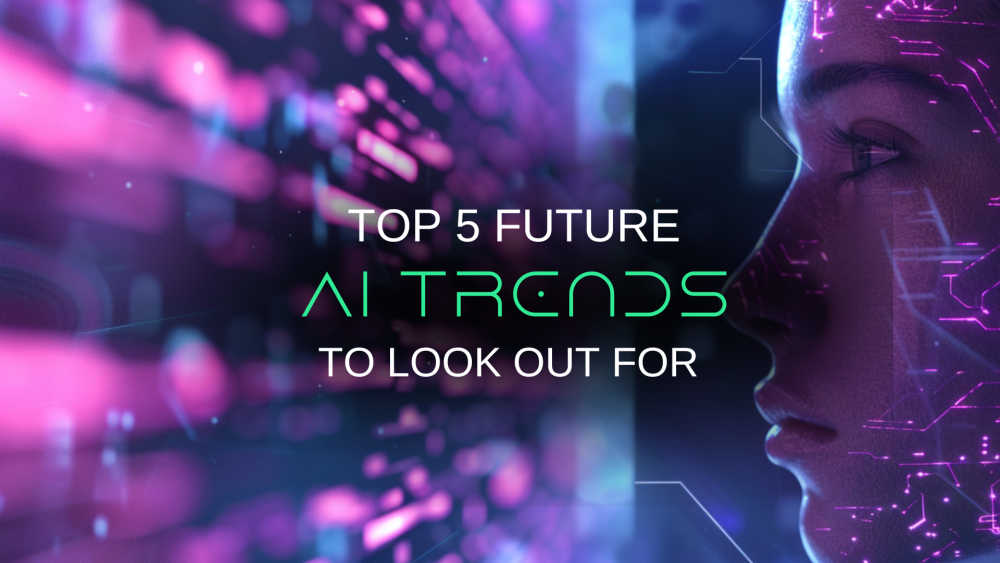Top 5 AI Trends Shaping the Future
According to the AI 2024 Index, artificial intelligence significantly boosts worker productivity and enhances the quality of work. In 2023, various studies evaluated AI's impact on the workforce, revealing its ability to improve work output. These studies also highlighted AI's potential to close the skill gap between lower- and higher-skilled workers. However, caution is advised, as improper use of AI can lead to decreased performance.
As we look ahead to 2024, it's clear that AI continues to transform various aspects of our lives and work environments. Here, we will be talking about the top 5 AI trends and how they are impacting the world:
Trend # 1: Virtual Assistants Are Getting Smarter
Virtual assistants (VAs) with advanced AI and distinct personalities are revolutionizing companies' operations.
In 2019, Google Assistant's April Fools' prank introduced a "Screen Cleaner" feature. It pretended to clean smartphone screens with virtual bubbles and squeaky-clean sound effects. That was a delightful experience for users.
However, these virtual assistants are getting better with AI. They are making an impact across various industries:
- Human Resources: VAs handle routine HR tasks like answering employee queries, scheduling interviews, and managing onboarding processes. Integrating AI in HR reduces the workload on the staff and ensures consistent communication.
- Customer Service: Companies are deploying VAs to provide 24/7 customer support, handle inquiries, resolve issues, and improve customer satisfaction. These VAs can understand and respond to customer emotions and preferences, offering a more personalized experience.
- Sales and Marketing: AI-driven VAs assist in lead generation, follow-ups, and personalized marketing campaigns, significantly boosting sales efficiency and customer engagement.
- IT Support: VAs are used to troubleshoot common IT problems, guide employees through technical issues, and manage helpdesk tickets, reducing downtime and improving productivity.
IBM's Watson Transforming HR with AI
IBM has successfully integrated Watson Assistant into its business operations:
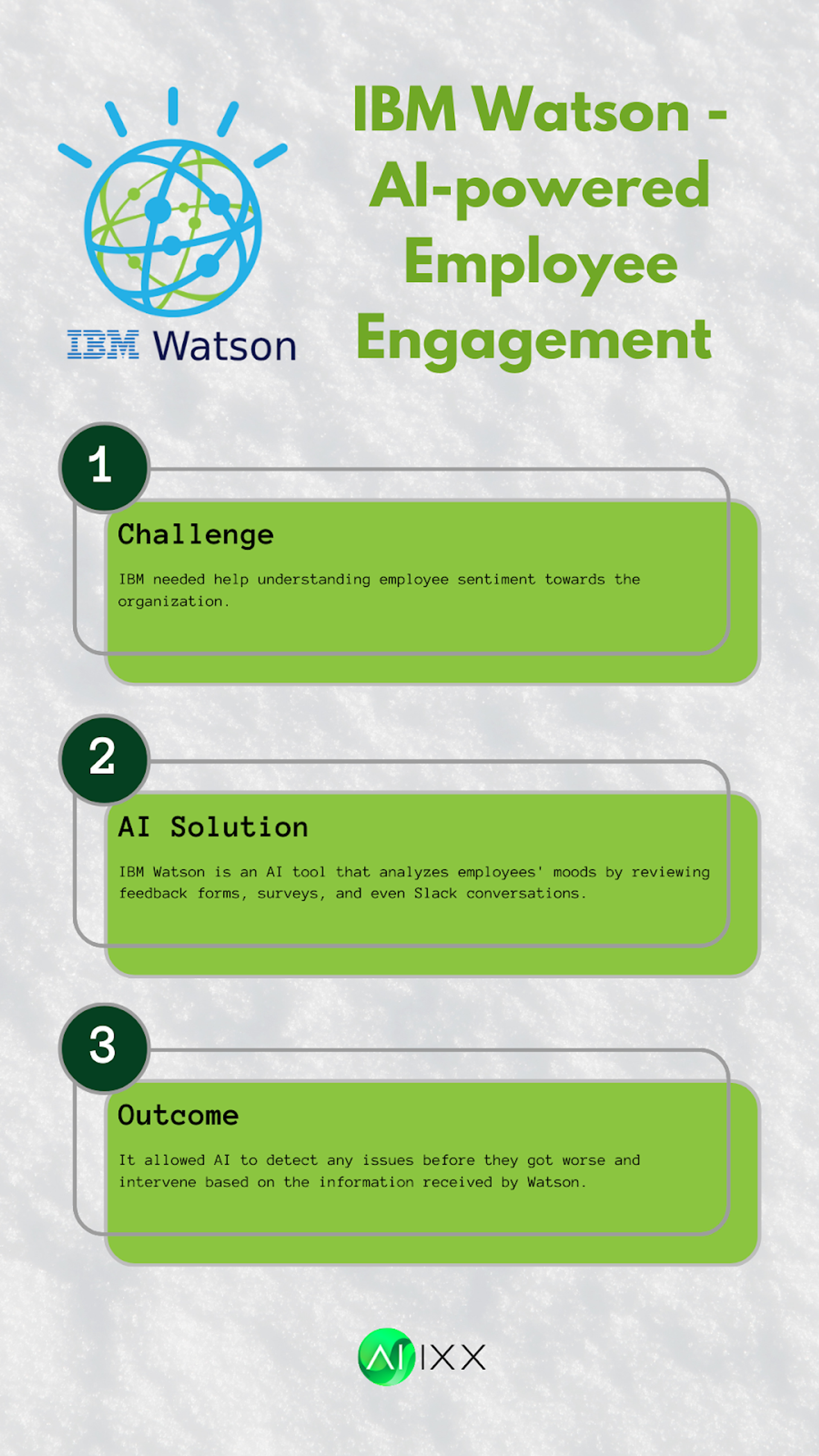
Trend # 2: NLP is Setting the Ground for a Revolution
Natural language processing (NLP) combines linguistics, computer science, and AI to process and analyze large amounts of natural language data. Advances in NLP have led to significant improvements in machine translation, sentiment analysis, chatbots, and voice assistants, making these technologies more intuitive.
The world’s data is estimated to reach 612 ZB by 2030 and 2,142 ZB by 2035. To manage and derive insights from this immense volume of textual information, NLP enables organizations to analyze, format, translate, and utilize data far more effectively than traditional statistical methods.
- Data Processing Speed: With NLP tools, companies can process data up to ten times faster, allowing for rapid analysis of unstructured data. This is crucial for industries that rely heavily on text, such as healthcare, finance, and legal services.
- Sentiment Analysis: NLP allows businesses to gauge public opinion by analyzing sentiments in reviews, surveys, and social media posts. This helps understand customer feedback and improves services.
- Text Classification and Extraction: NLP can classify text, extract essential information, and identify keywords, making it easier to organize and retrieve relevant data.
MonkeyLearn Analyzing Text with NLP
This AI text analysis tool, MonkeyLearn, analyzes reviews, surveys, and support tickets in retail, marketing, and finance. Searches for "MonkeyLearn" have surged by 200% in the past five years, highlighting its growing popularity.
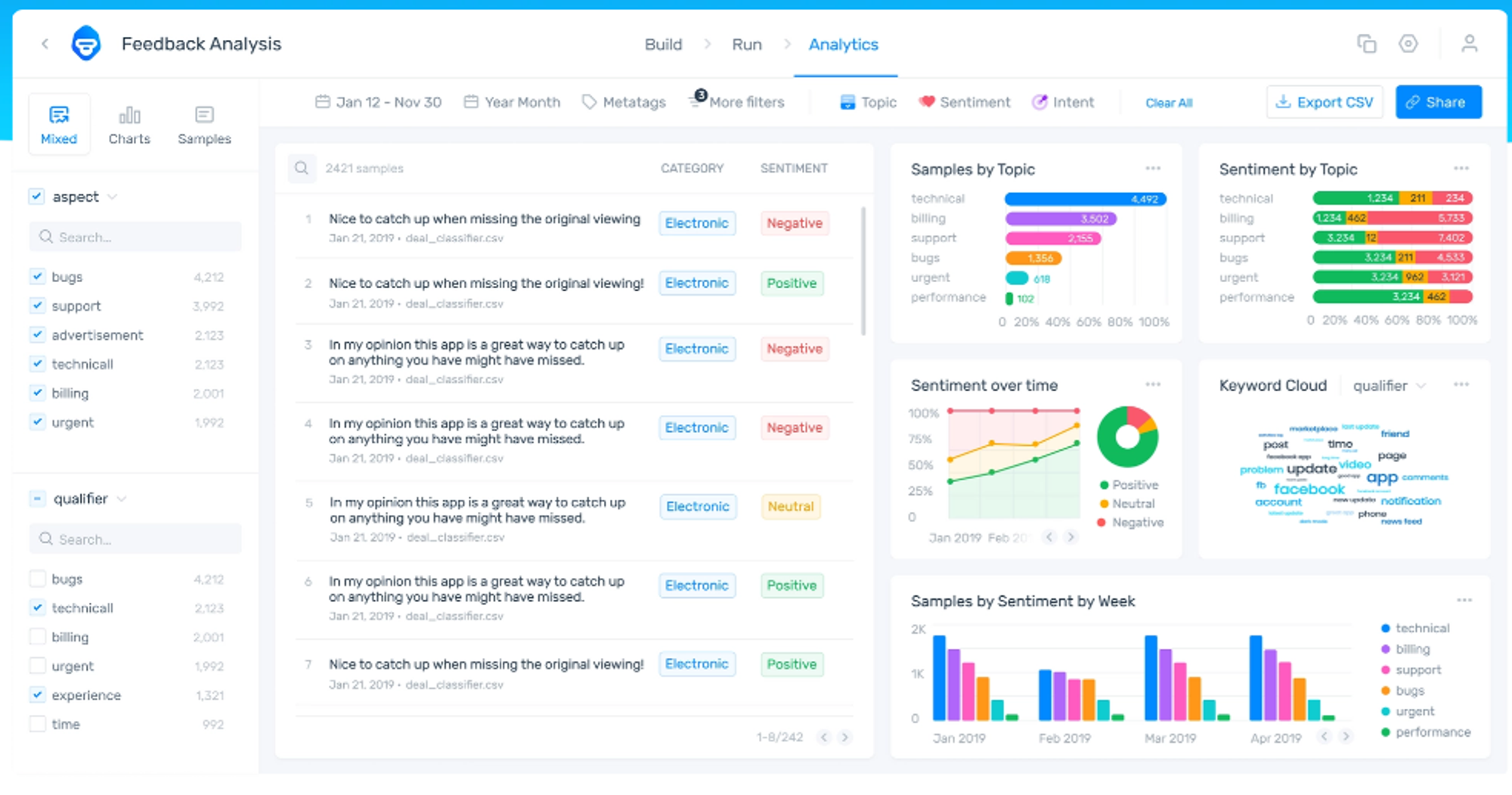
BlackBoiler Using NLP in the Legal Sector
In the legal sector, BlackBoiler uses NLP to analyze contracts and suggest changes automatically, much like the "track changes" feature in word processors. This technology streamlines the review process, ensuring more accurate contract management.
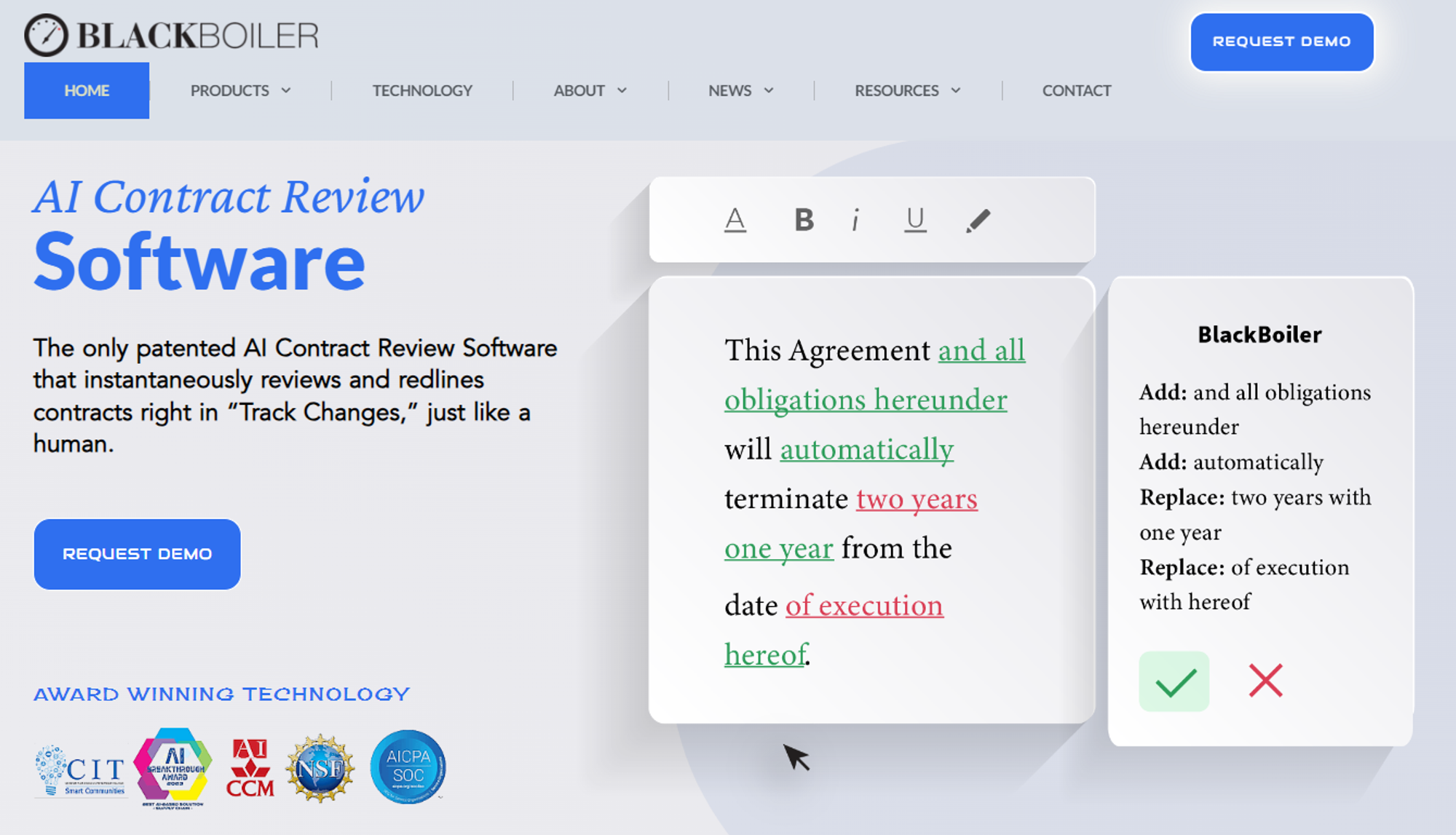
Trend # 3: Multimodal AI is Blending Senses for Improved Accuracy
The future of AI lies in its ability to blend different types of data to create more sophisticated models. Multimodal AIs integrate various input forms, such as text, images, audio, and video, into a single model, allowing for a more comprehensive understanding.
Traditional AI models, like text-to-image or speech-to-text, typically focus on a single data type and operate in one direction. However, the latest generation of multimodal models, including OpenAI's GPT-4V, Google's Gemini, and open-source models like LLaVa, Adept, and Qwen-VL, can transition between tasks involving natural language processing and computer vision. These models can interpret and generate data across multiple modalities, creating more versatile AI systems.
Lumiere Turning Text to Video
Multimodal AI is now incorporating video into the mix. For example, Google’s Lumiere, announced in January, is a text-to-video diffusion model that performs image-to-video tasks and uses images as style references. This video integration enhances the functionality of AI applications.

Trend # 4: AI is Protecting the Digital Environment with Enhanced Cybersecurity
Cybersecurity is a critical aspect of modern business operations. It protects systems, applications, devices, sensitive data, and financial assets from cyber threats. With cybercrime projected to cost the global economy $10.5 trillion annually by 2025, robust cybersecurity measures are more essential than ever.
AI is transforming cybersecurity with more sophisticated, proactive, and adaptive defenses against cyber threats. Here’s how:
- Advanced Threat Detection: AI systems can analyze vast amounts of data in real time, identifying patterns and anomalies that may indicate a cyber threat.
- Predictive Analytics: Using machine learning algorithms, AI can predict future threats based on historical data and emerging trends.
- Automated Response: AI-powered cybersecurity tools can automatically respond to detected threats, isolating affected systems and neutralizing attacks without human intervention.
- Enhanced Endpoint Security: AI improves endpoint security by continuously monitoring devices for suspicious activity.
AI-drive Cybersecurity with IBM Security QRadar Suite
IBM Security QRadar Suite uses enterprise-grade AI to enhance threat detection and response. It integrates endpoint security, log management, Security Information and Event Management (SIEM), and Security Orchestration, Automation, and Response (SOAR) into a platform with a standard user interface. QRadar’s AI capabilities provide accurate and timely threat identification.
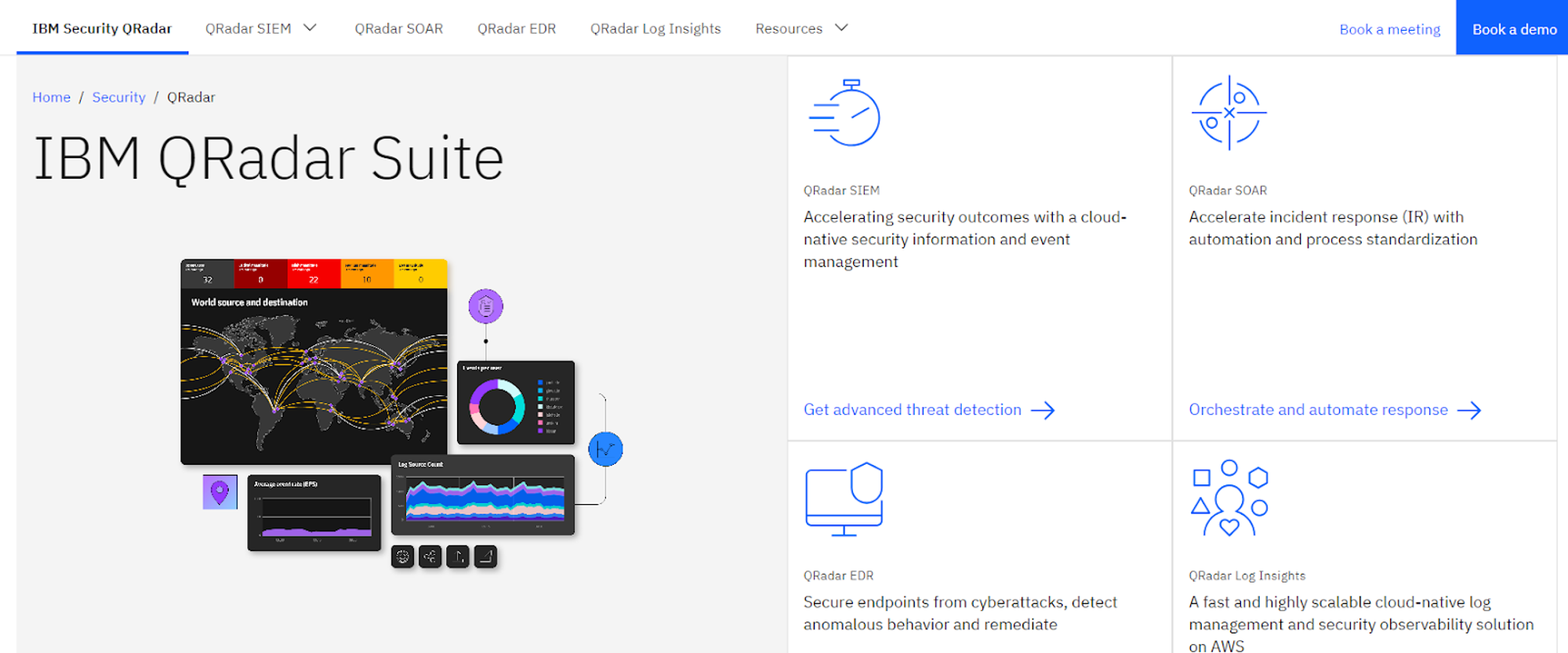
Trend # 5: Embedded AI is Creating Smarter Devices
The French Directorate General for Enterprise (DGE) projects that the development of Embedded AI could be worth $175 to $215 billion by 2025. This embedded AI technology uses sophisticated algorithms and high-performance yet affordable graphics processors.
Smartphones exemplify the evolution of embedded AI. Initially, low-energy-consuming sensors were used to free up bandwidth. Now, with voice assistants like "Hey Siri" and "OK Google," smartphones demonstrate the deployment of machine learning algorithms on low-power platforms such as microcontrollers and DSPs. This innovation showcases the potential of embedded AI in making everyday devices more responsive.
| Application | Features | Function | Capabilities |
|---|---|---|---|
| Autonomous Vehicles | Cameras, lidars, and radars | Real-time data processing for safe navigation | Identifies vehicles, pedestrians, traffic signs, and lane markers |
| Domestic Robotics | Robotic vacuum cleaners, kitchen robots | Floor detection, autonomous navigation, cooking automation | Uses cameras and robotic arms to optimize household tasks |
| Smartwatches and Fitness Bracelets | Heart rate and blood oxygen monitors | Health monitoring and activity tracking | Provides personalized health advice and alerts for abnormalities |
| Smart Healthcare | Intelligent prosthetics, care robots | Enhances functionality and adaptability for users | Learns movement patterns and assists in daily tasks |
| Aerospace Industry | Space exploration and satellite management | Automates decision-making and collision avoidance | Manages orbits and trajectories of satellites and space debris |
| Smartphones | Voice assistants, low-energy sensors | Recognizes voice commands like "Hey Siri" and "OK Google" | Deploys machine learning algorithms on low-power platforms such as microcontrollers and DSPs |
The Road Ahead: AI's Role in Future Progress
Artificial intelligence has reshaped our lives with significant impacts across various sectors. Rapid advancements in AI technology continue to push boundaries, leading to smarter, more efficient systems that enhance productivity and improve the quality of work.
The future of AI promises even more incredible advancements and deeper integration into our daily lives. As AI evolves, we expect more sophisticated, reliable, and intelligent systems to enhance productivity, security, and convenience. AI's potential to revolutionize industries, from healthcare to aerospace, will drive innovation and shape the future technology landscape.

